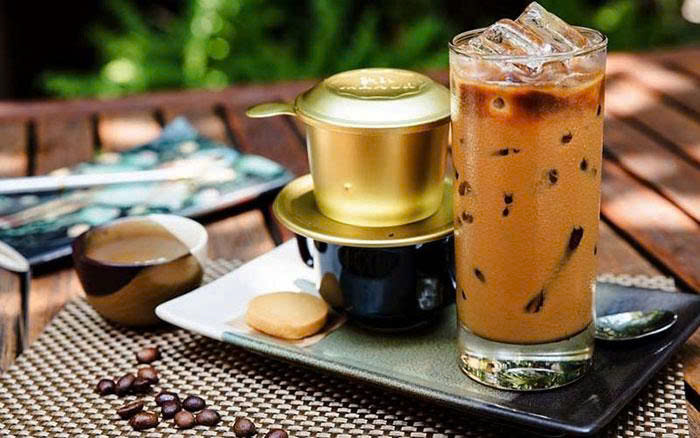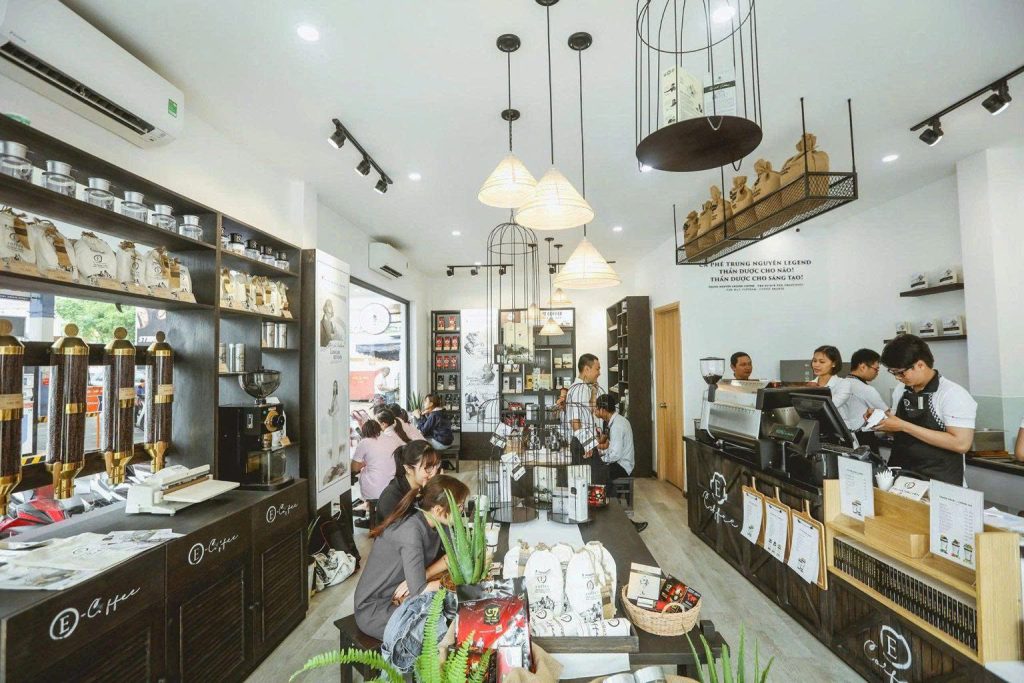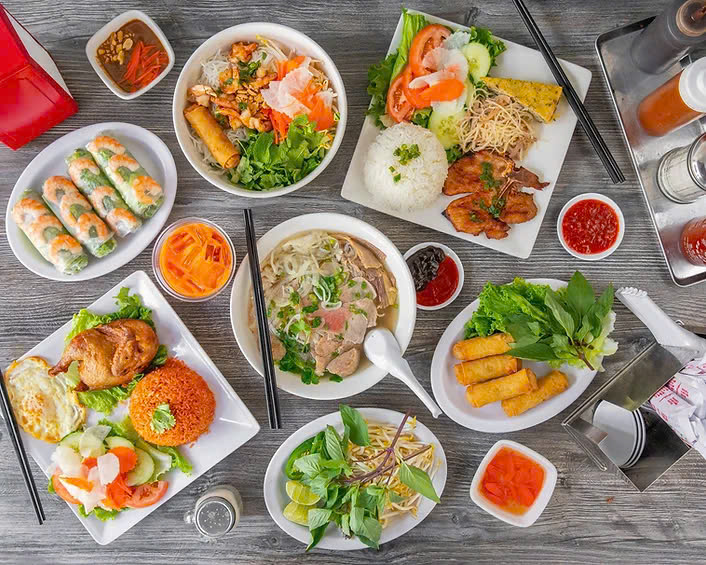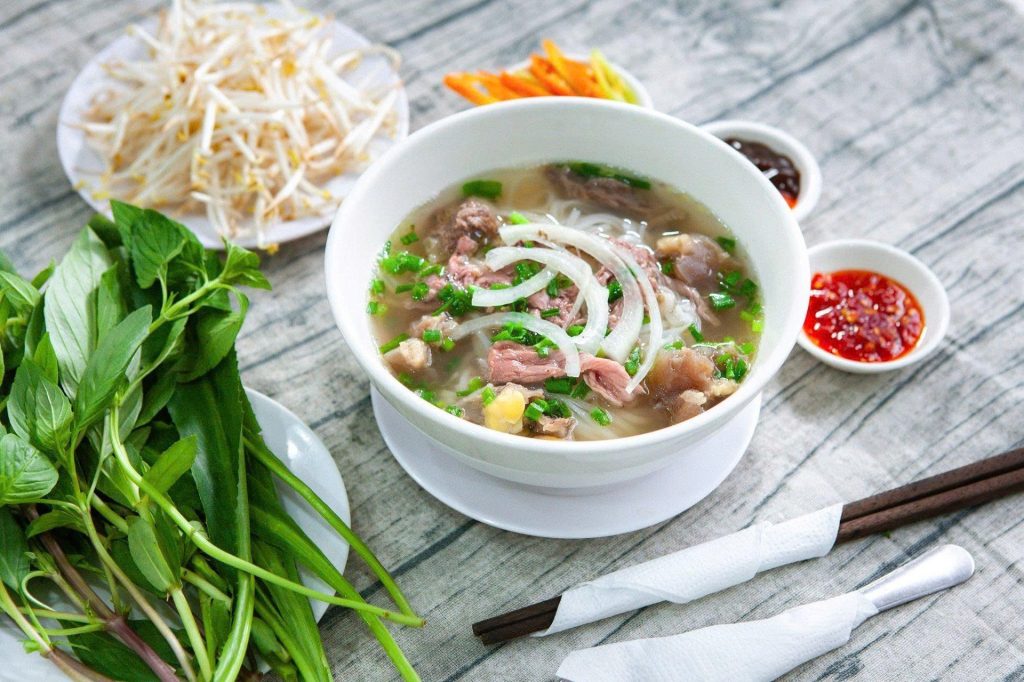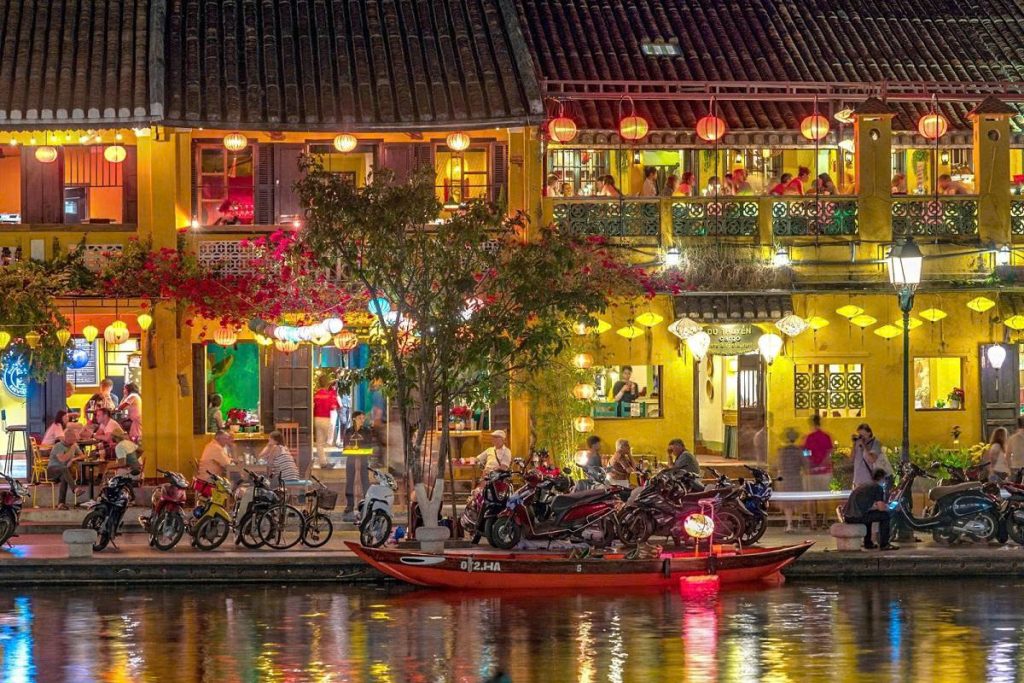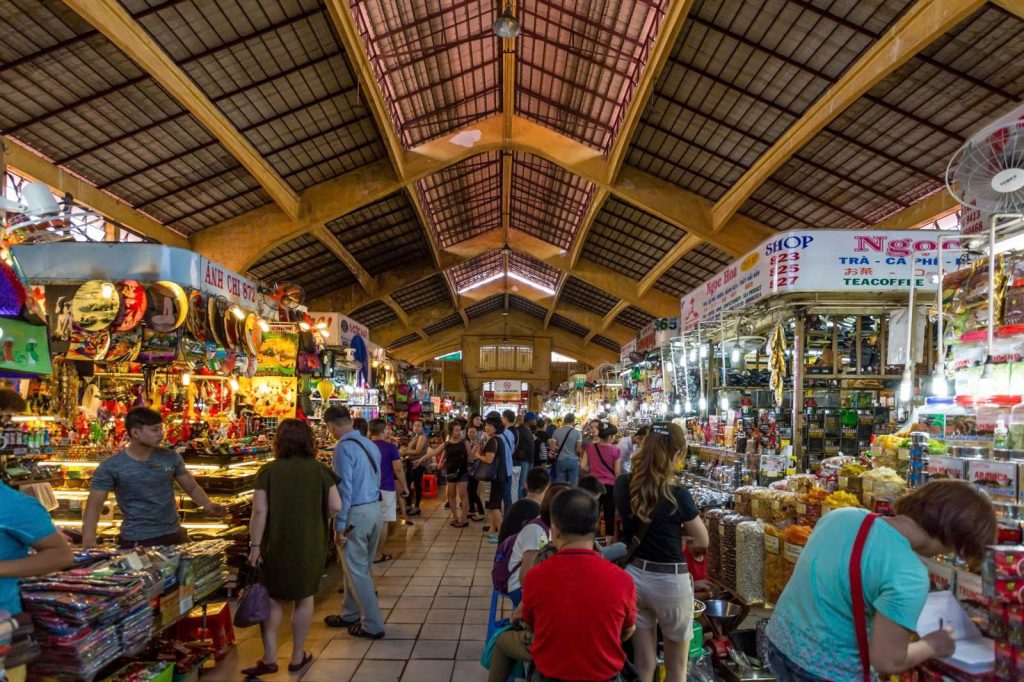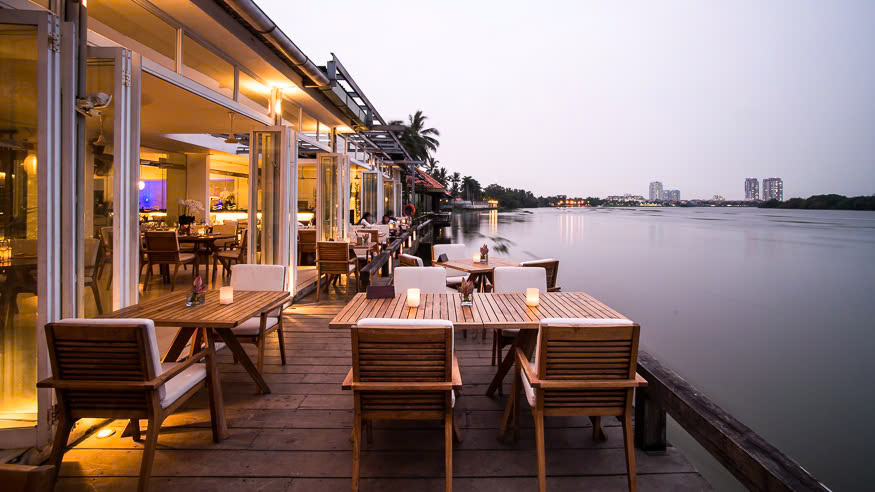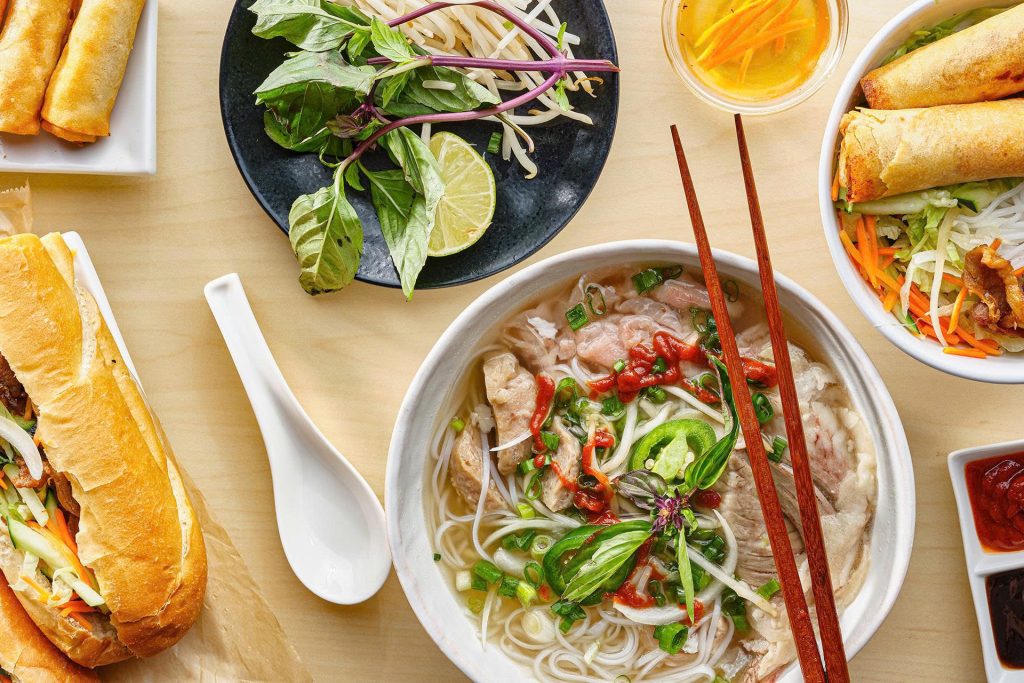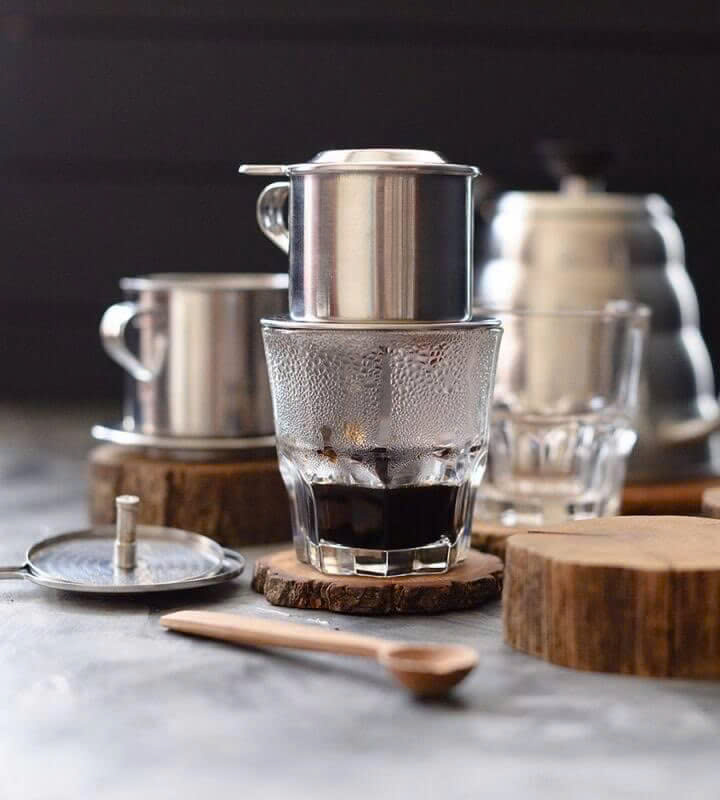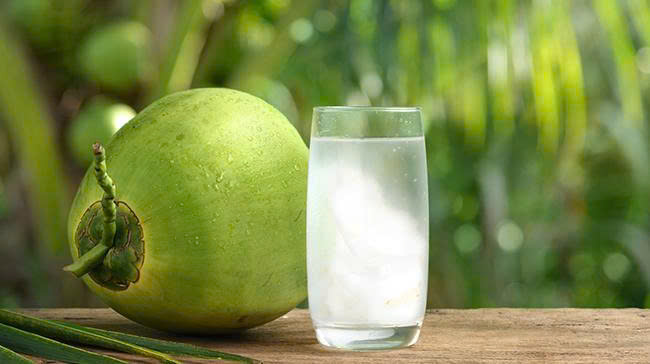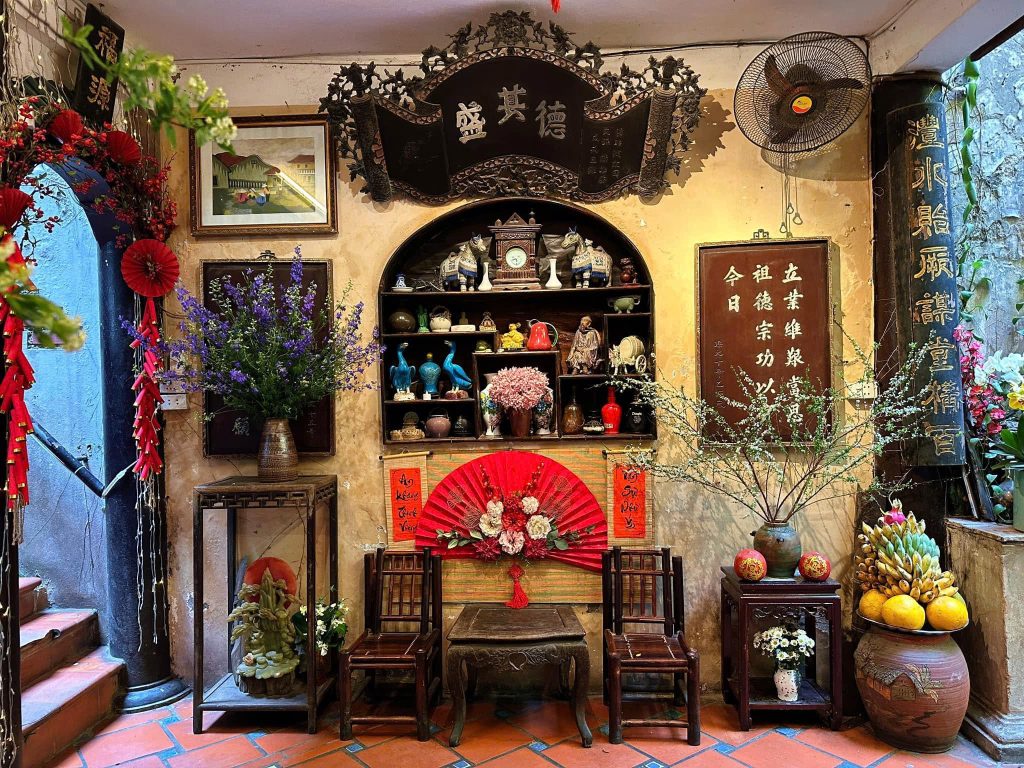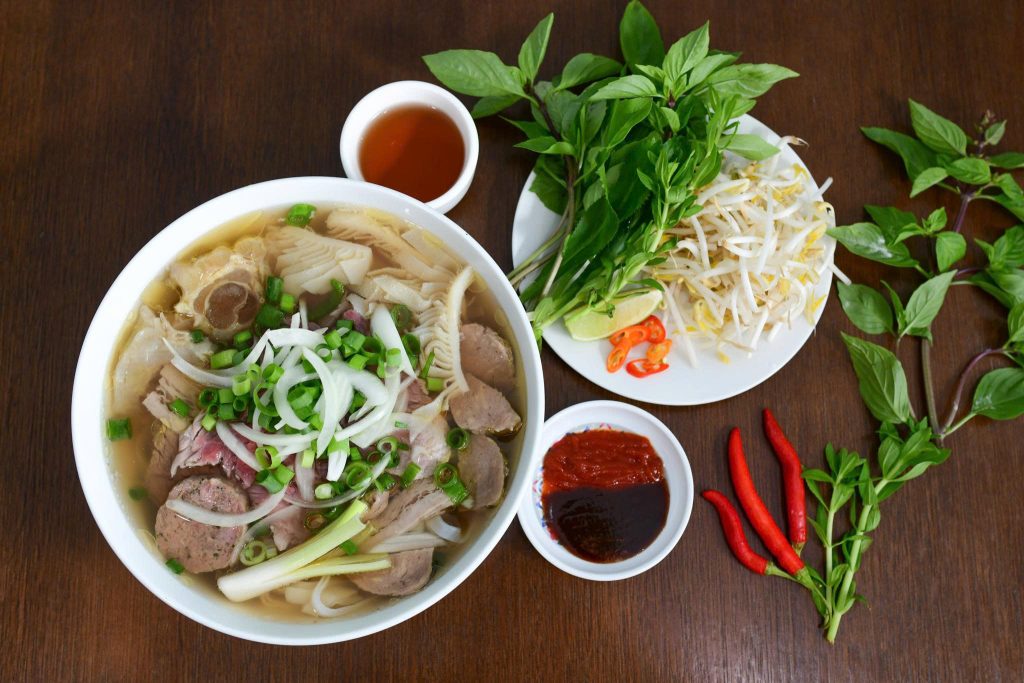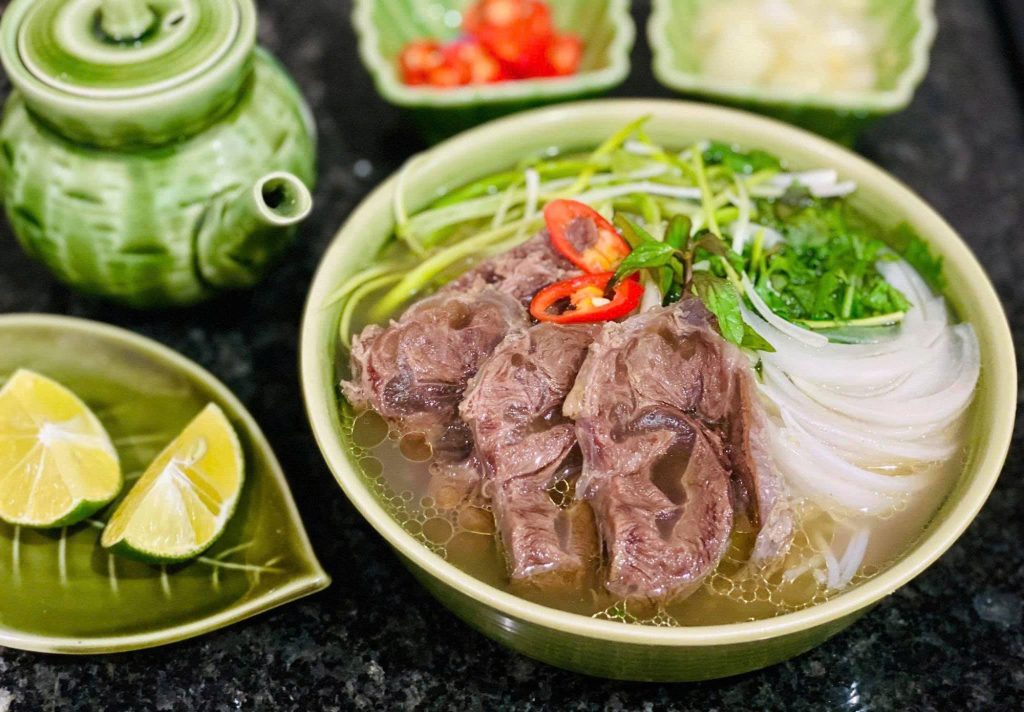Vietnamese coffee is far more than a beverage; it’s a cultural ritual, a social catalyst, and a defiant testament to creativity. For millions, it’s an invitation to slow down and observe life from a low plastic stool, marking time by the slow, deliberate drip of the Phin filter.
This unique culture began with French colonial influence in the mid-19th century. Crucially, Vietnamese farmers embraced the intense, earthy Robusta bean, which now makes the country the world’s second-largest coffee exporter. This preference for strong flavor necessitated the ingenious adaptation of sweetened condensed milk—a brilliant solution during dairy shortages—creating a hyper-strong, intensely sweet signature flavor found nowhere else.
This article delves into the profound “Art” of this tradition, focusing on its two most iconic forms: the luxurious, creamy Cà Phê Trứng (Egg Coffee) from Hanoi, and the robust, refreshing Cà Phê Sữa Đá (Vietnamese Iced Coffee), the quintessential staple of the South.
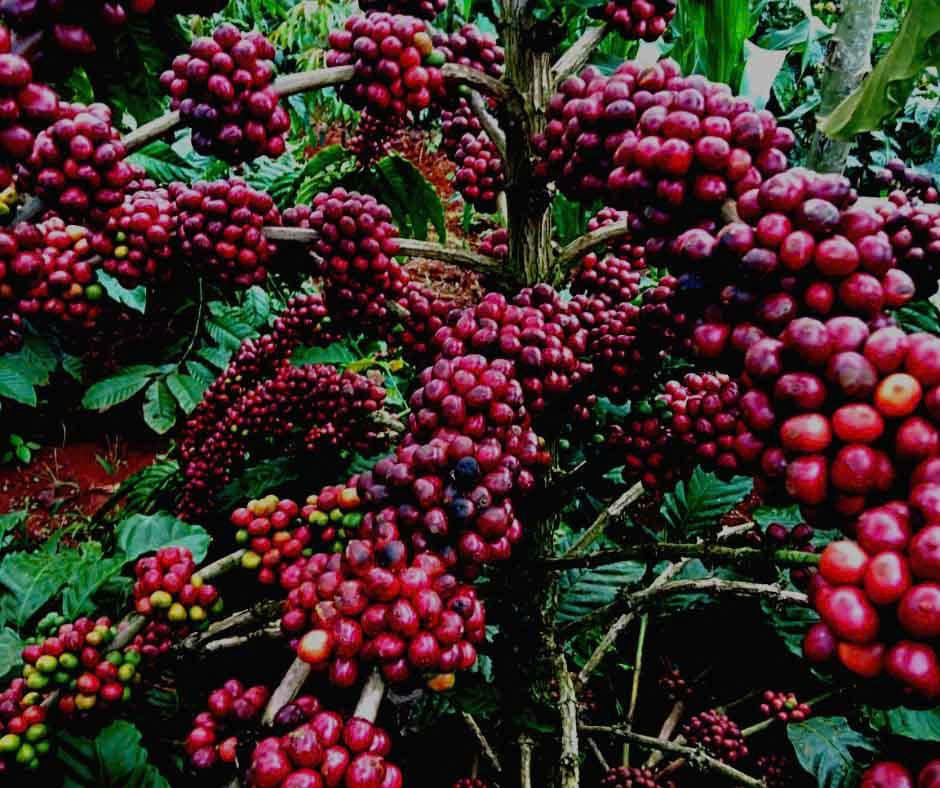 Vietnamese coffee is a rich, bold experience brewed with unique tradition.
Vietnamese coffee is a rich, bold experience brewed with unique tradition.
1. The Foundations: History, Beans, and The Phin Filter Mastery
A History Forged in Scarcity and Innovation
The story of Vietnamese coffee is a microcosm of the country’s turbulent history, embodying resilience and ingenuity. Coffee was first introduced to Vietnam around 1857 by French Catholic priests, who found the cool, fertile soil of the Central Highlands plateau—particularly the regions of Buôn Ma Thuột and Đà Lạt—ideal for initial cultivation.
The Robusta Revolution and Its Profound Impact
While the French initially established Arabica plantations, these plants struggled with the country’s harsh tropical climate and susceptibility to disease. By the early 20th century, Vietnamese farmers increasingly turned to the robust, lower-maintenance Robusta bean (Coffea canephora). This shift was pivotal. Robusta is the ultimate foundation for Vietnamese coffee, possessing two distinct characteristics that define the flavor experience:
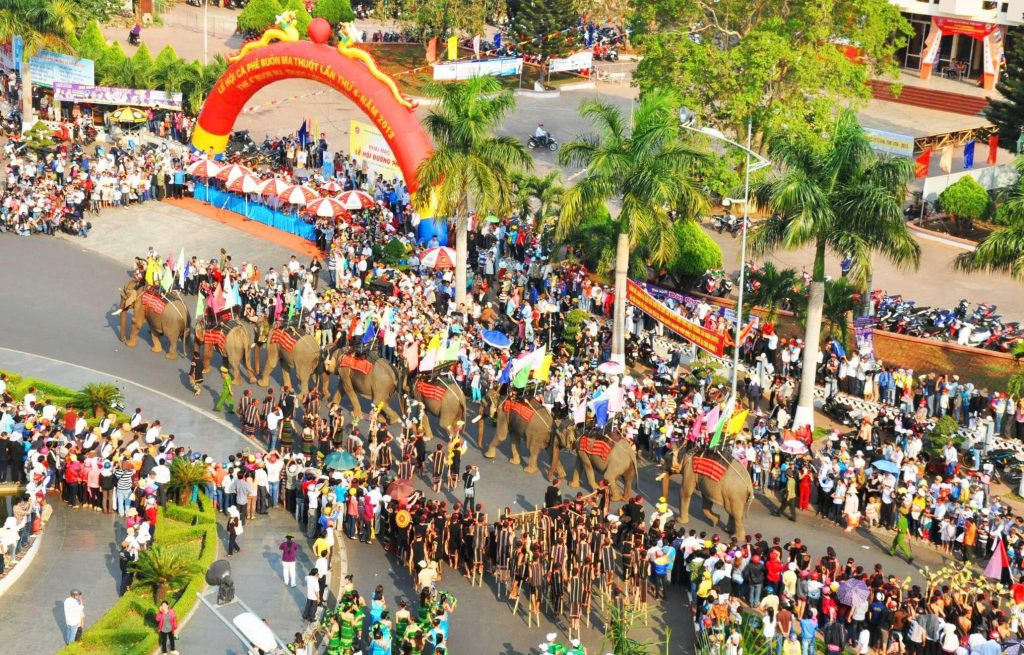
- High Caffeine Content: Robusta beans boast nearly twice the caffeine of Arabica (about 2.5% to 4.5% versus Arabica’s 1.5%), resulting in an exceptionally strong, powerful, and thick brew that provides the legendary caffeine kick Vietnamese coffee is famous for.
- Earthy, Bitter Flavor: Robusta offers a deep, sometimes savory, and intensely bitter profile. This intensity is crucial because it creates the perfect counterpoint for the sheer amount of sugar and fat provided by the second key component: sweetened condensed milk.
By the 1990s, after decades of focused national development, Vietnam successfully transformed into the world’s second-largest coffee exporter (after Brazil), with Robusta production dominating the global market. This success is not just economic; it speaks to the country’s agricultural mastery and singular focus on its preferred, powerful bean.
RELATED: Vietnamese filter coffee: The Soul of Vietnam in Every Drop
The Condensé Solution: Born of War and Necessity
During the First Indochina War (1946–1954), fresh milk was a luxury, difficult to produce, store, and transport in the tropical climate. This scarcity forced an ingenious culinary adaptation: replacing fresh dairy with sweetened condensed milk (sữa đặc). This wasn’t merely a substitute; it was a defining choice. The sticky, rich, caramelized milk not only preserved indefinitely but, critically, its high fat and sugar content perfectly balanced the intense bitterness of the dark-roasted Robusta. This pairing created a unique, decadent mouthfeel and flavor concentration that cemented the future of the drink and became the undeniable global signature of Vietnamese coffee.
2. The Soul of Brewing: Mastering the Phin Filter

The beating heart of Vietnamese coffee culture is the Phin filter, a simple, slow-drip brewing device that epitomizes the “Art” of the process and represents a direct, though adapted, legacy of French café culture.
Anatomy of the Phin and Its Cultural Significance
The Phin is a small, gravity-based metal filter, typically made of aluminum or stainless steel, consisting of four essential parts:
- The Perforated Plate (Basket): The base that sits directly on the cup.
- The Brewing Chamber: Holds the coarsely ground coffee.
- The Screw-Down Press (Tamper): Used to compress the grounds, controlling the flow rate and ensuring even saturation.
- The Lid: Used to cover the brewing chamber and often to pre-warm the cup.
The Phin process is the antithesis of the modern, rapid espresso shot. It dictates the pace of the day; you simply cannot rush a Phin. Watching the precious, concentrated drops fall into the awaiting layer of condensed milk is a meditation—a forced pause that is integral to the Vietnamese mindset of savoring the moment. It turns the act of drinking coffee into a slow, ten-minute ritual of anticipation and observation.
RELATED: Guide to Brew Traditional Vietnamese Phin Coffee
Phin Techniques: The Art of Compression and Drip for Optimal Extraction
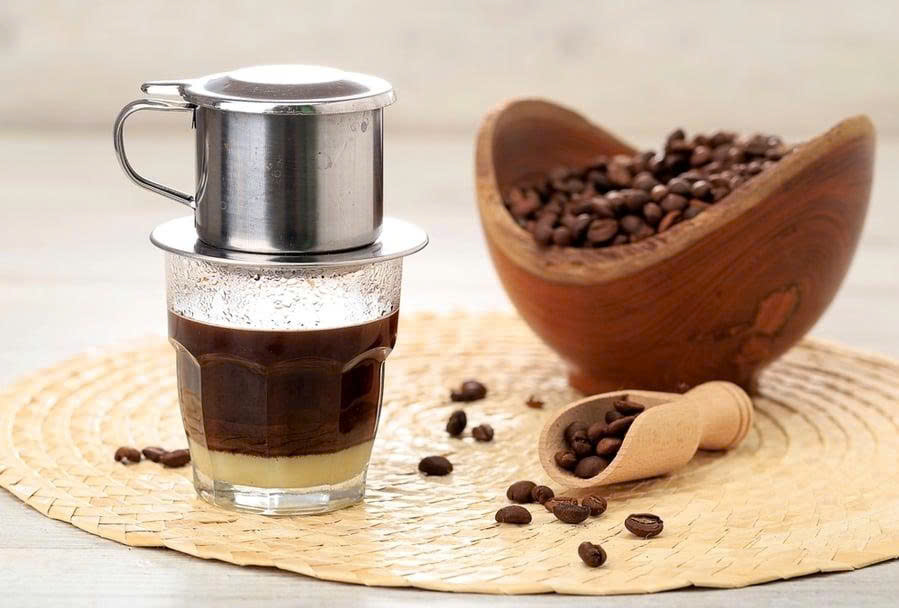
To achieve the thick, intensely-flavored concentrate (cà phê cốt) required for the iconic drinks, the Phin method requires precise technique, transforming a simple brewing task into a micro-art form:
- Pre-warming: The Phin and the serving cup must be warmed with boiling water to prevent rapid heat loss, which is essential for proper extraction.
- The Grind and Dose: Use a coarse to medium-coarse grind of dark-roasted Robusta. The standard dose is 20g to 25g of coffee per serving.
- The Compress: The coffee grounds must be compressed to the correct density using the tamper. This is the hardest part to master. Too tight, and the coffee clogs, resulting in over-extraction and extreme bitterness. Too loose, and the water rushes through, resulting in a weak, under-extracted brew.
- The Bloom (Pre-Infusion): This step is crucial. A small amount (15ml to 20ml) of hot water (92∘C to 96∘C) is poured onto the grounds and allowed to sit for about 30 seconds. This allows the coffee to “bloom” (degas and swell), which prevents water from “channeling” through the coffee bed and ensures optimal, even extraction.
- The Main Pour: The remaining hot water is added. The ideal drip time is between 5 and 7 minutes. The final result should be a small, intensely dark, and concentrated cup—the perfect canvas for either Cà Phê Sữa Đá or Cà Phê Trứng.
The Icon of the South: Mastering Cà Phê Sữa Đá (Vietnamese Iced Coffee)
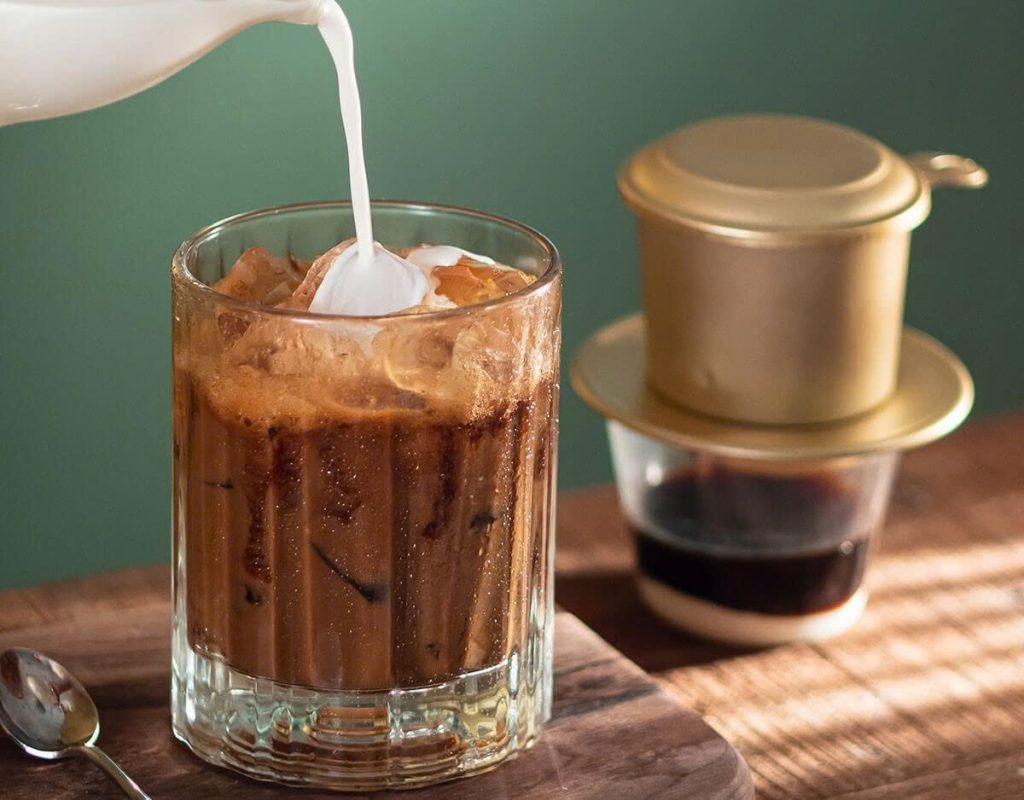
This section details the iconic Cà Phê Sữa Đá, providing the detailed “how-to” expertise and cultural context demanded by the search intent. It is the lifeblood of Southern cities like Hồ Chí Minh City (Saigon).
Cà Phê Sữa Đá: The Quintessential Street Staple
If the Phin is the soul of Vietnamese brewing, Cà Phê Sữa Đá is the lifeblood of its people, especially in the sweltering heat of the South. The name translates simply to “coffee, milk, ice” (Cà phê – Sữa – Đá) and represents a perfect culinary paradox: a drink that is simultaneously intensely strong and refreshingly cool.
The Flavor Paradox: Strength Meets Sweetness
The drink’s brilliance lies in its extreme profile. The initial concentration is incredibly bitter due to the use of dark-roasted Robusta. However, this bitterness is immediately countered by a dense, sugary layer of sweetened condensed milk at the bottom of the cup. Once stirred and poured over ice, the result is a velvety, caramel-like, chocolatey flavor with a tremendous caffeine punch. It is the perfect tropical energy drink, designed to cut through the humidity and fuel the fast-paced activity of Southern life. The viscosity imparted by the condensed milk ensures the flavor does not become watery as the ice melts.
Cultural Context: The All-Day Social Fix
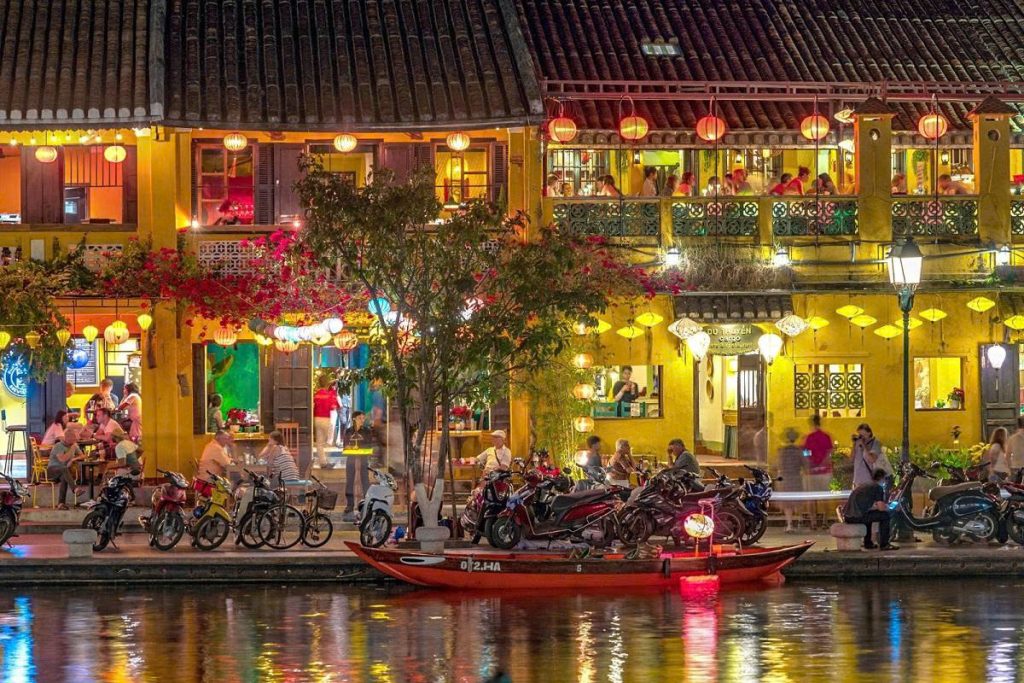
Cà Phê Sữa Đá is consumed throughout the day, from pre-dawn fuel to a post-dinner digestif. It is the undisputed centerpiece of the sidewalk café (cà phê cóc)—a casual, democratic experience where businessmen and laborers sit side-by-side on low plastic stools. This informal setting allows for genuine people-watching and socializing. The slow drip of the Phin, followed by the slow, sweet sip, embodies the Vietnamese tradition of taking time for community and observation. It’s an efficient mechanism for connection, providing both the energy to participate and the sweetness to relax.
RELATED: The 10 Best Cafes in Hoi An: A Coffee Lover’s Guide
The Icing and Regional Nuances
While many modern establishments use nugget or cubed ice, the true traditional Cà Phê Sữa Đá often features large ice blocks that are roughly broken, which melts slower, maintaining the drink’s integrity for longer. In the North, the equivalent is cà phê nâu đá (brown iced coffee), though the overall coffee culture tends to favor hot drinks more than the South.
Expert Recipe: How to Brew the Perfect Cà Phê Sữa Đá
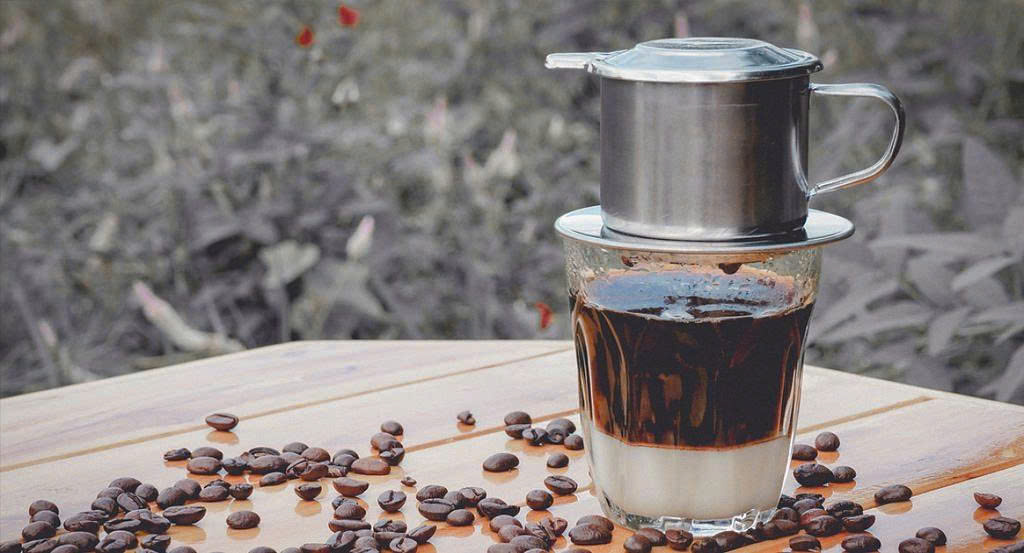
Achieving the authentic, hyper-concentrated flavor of Cà Phê Sữa Đá requires strict adherence to the Phin method and precise ingredient ratios.
The Gold Standard Ingredients and Ratios:
- Coffee: 20g to 25g of coarsely ground dark-roast Robusta.
- Water: 80ml of hot water (92∘C to 96∘C).
- Condensed Milk: 30ml to 45ml of high-quality sweetened condensed milk (Sữa Đặc).
- Ice: A tall glass full of ice (preferably chunky ice for slower dilution).
Step-by-Step Phin Brewing for Iced Coffee:
- Prepare the Sweetness: Pour the condensed milk into the bottom of a sturdy, heatproof glass.
- Phin Assembly: Place the coffee grounds into the pre-warmed Phin. Lightly compress the grounds using the screw-down press. Do not over-tighten.
- The Bloom: Pour 15ml of hot water over the press and allow the coffee to bloom for 30 seconds.
- The Main Pour: Pour the remaining 65ml of hot water into the Phin. Cover with the lid.
- The Slow Drip: Allow the coffee to drip completely into the glass. This should take approximately 5 to 7 minutes. The resulting concentrate, mixed with the condensed milk, is known as Cà Phê Sữa Nóng (hot milk coffee).
- Icing and Serving: Stir the hot concentrate and the condensed milk until the mixture is fully dissolved into a dark, viscous liquid. Pour this concentrate into a separate, tall serving glass filled with ice. Stir vigorously to chill, ensuring a beautiful transition to the rich, dark caramel hue. Sip slowly.
3. The Luxurious Northern Secret: The Story of Egg Coffee
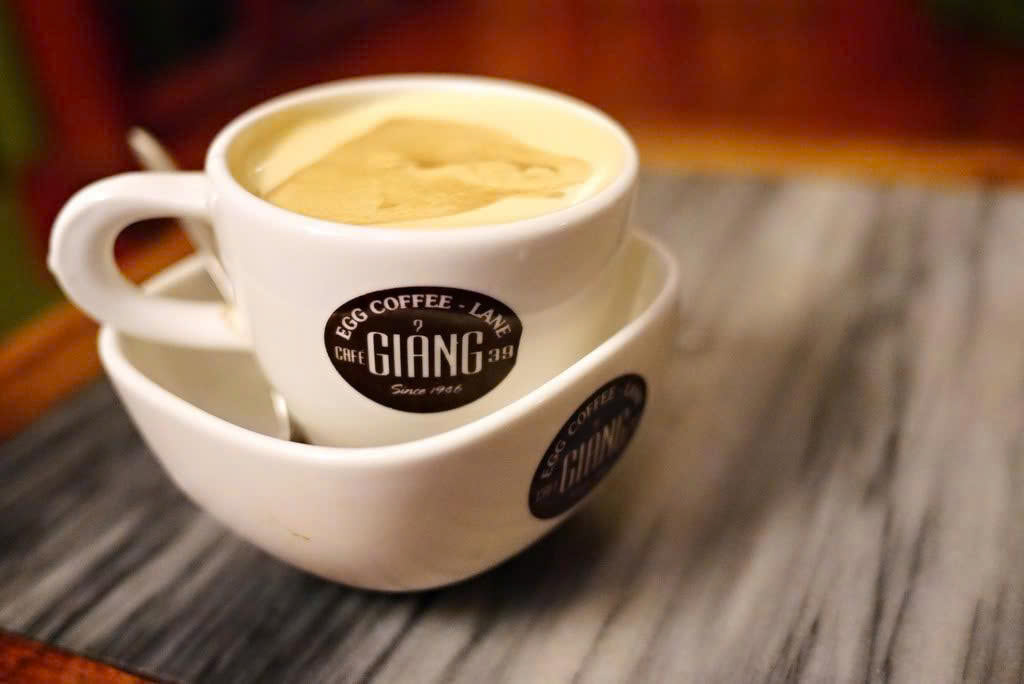
Cà Phê Trứng: A Dessert Born of Necessity: The Cà Phê Trứng (Egg Coffee) is Hanoi’s ultimate culinary claim to fame—a decadent, dessert-like drink that encapsulates the spirit of Vietnamese innovation. It is an extraordinary example of finding luxury in the most basic of ingredients.
The Giảng Origin Story: A Chef’s Solution
The drink was invented around 1946 by Mr. Nguyễn Văn Giảng, who was working as a bartender at the famous Sofitel Legend Metropole Hotel in Hanoi. During this post-war period, fresh milk was extremely difficult to source and prohibitively expensive. Mr. Giảng, needing a creamy complement for the strong black coffee, experimented with whisking egg yolk until he achieved a rich, frothy, and remarkably stable foam. He successfully used this foam to replace the scarce fresh dairy, creating a masterpiece that became instantly popular. Mr. Giảng later left the hotel to open his own establishment, Café Giảng (which still operates today), cementing his legacy as the inventor of this iconic drink.
Flavor and Texture Profile: Liquid Tiramisu
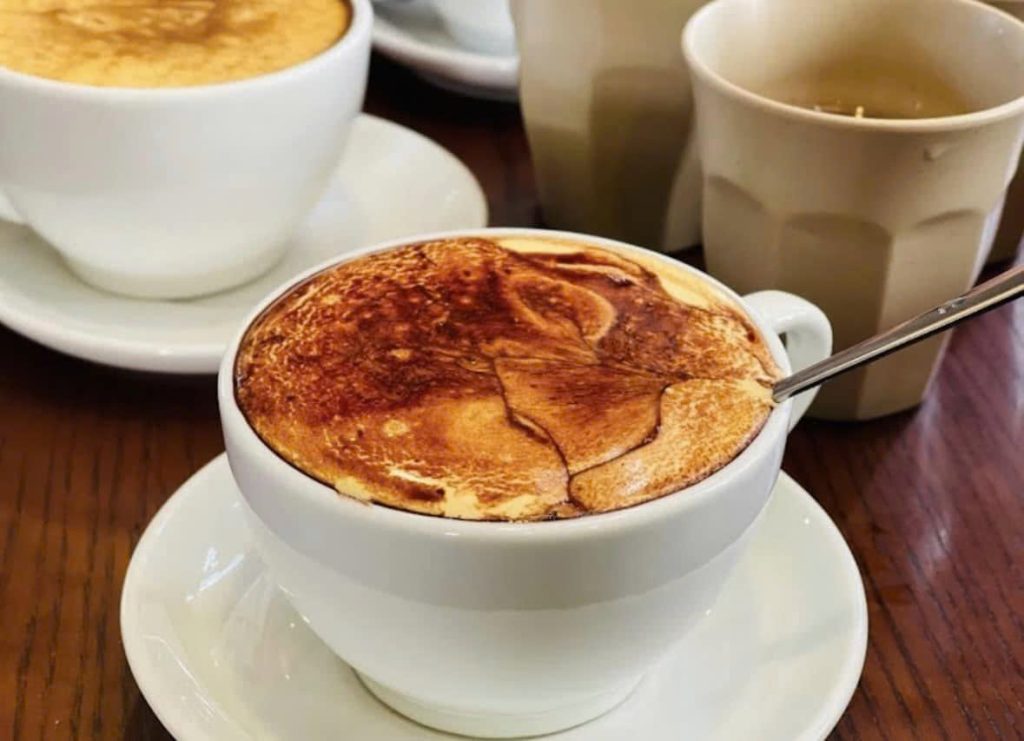
Cà Phê Trứng is a two-layer masterpiece designed for maximum contrast and richness:
- The Base: A small, powerful shot of hot black Robusta coffee, often brewed in a Phin.
- The Topping: A thick, airy, meringue-like egg foam made from whisked egg yolk, sweetened condensed milk, and occasionally a secret ingredient like butter or cheese for stability and flavor.
The result is less a coffee drink and more a liquid dessert. The creamy, slightly savory foam hits the palate first, followed by the intense, bitter heat of the coffee, creating a complex flavor often likened to a smooth coffee custard or a liquid tiramisu.
The Serving Ritual: Maintaining the Cream
The drink is almost always served in a small cup that is placed inside a small bowl of warm water. This serving method is essential: it prevents the hot coffee from cooling too quickly and, more importantly, keeps the egg foam warm and stable, preventing it from solidifying or deflating, which would ruin the velvety texture. The drinker is encouraged to sip the foam with the coffee, or to use a small spoon to savor the foam separately.
RELATED: 10 Best Coffee Shops in Hanoi: A Local’s Guide
Expert Recipe: Crafting the Silky Egg Foam
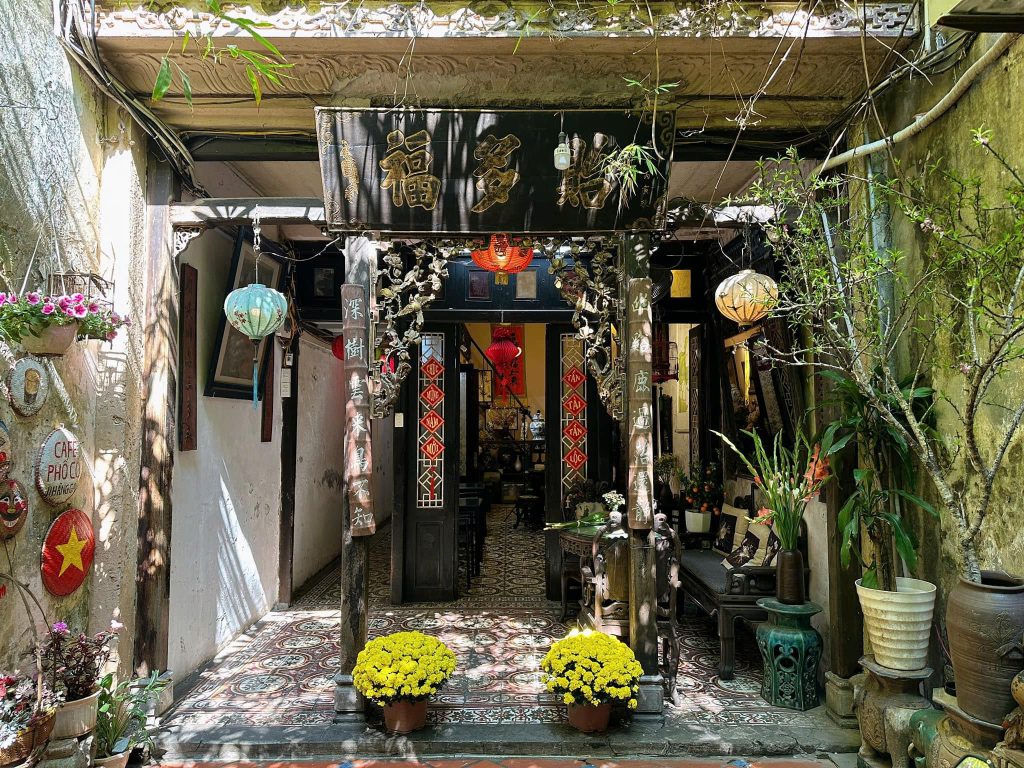
The secret to Cà Phê Trứng is the foam. The goal is a light, airy, yet stable cream that perfectly balances the dark coffee below.
Key Ingredients and Safety:
- Coffee: 40ml concentrated black coffee (Phin-brewed Robusta).
- Egg Foam: 2 fresh egg yolks (using pasteurized eggs is recommended for food safety).
- Sweetener: 2 to 3 tablespoons of sweetened condensed milk.
- Flavoring: A dash of vanilla extract or honey (optional, but helps neutralize egg aroma).
RELATED: Exploring Vietnamese Egg Coffee
Technique: The Meringue Method for Stability:
- The Base: Brew the Phin coffee directly into the serving cup
- Foam Preparation: Separate the yolks and place them in a small, deep bowl. Add the condensed milk and vanilla.
- Whisking: Whisk the mixture vigorously. While a small handheld electric whisk is the most efficient tool for creating stable, voluminous foam, traditionalists use a balloon whisk over a bowl of hot water. The key is to introduce air until the mixture turns a pale yellow, nearly white color and thickens to a consistency similar to a stable meringue or custard—it should leave a distinct trail when lifted.
- Assembly: Carefully spoon the egg foam over the hot black coffee base. The foam should float on top, creating a distinct, attractive layer.
- Serving: Place the cup in a bowl of warm water. Serve immediately with a small spoon. The heat of the coffee and the water bath “cooks” the raw yolk slightly and maintains the integrity of the foam.
4. Expanding the Culture: Other Essential Vietnamese Coffee Drinks
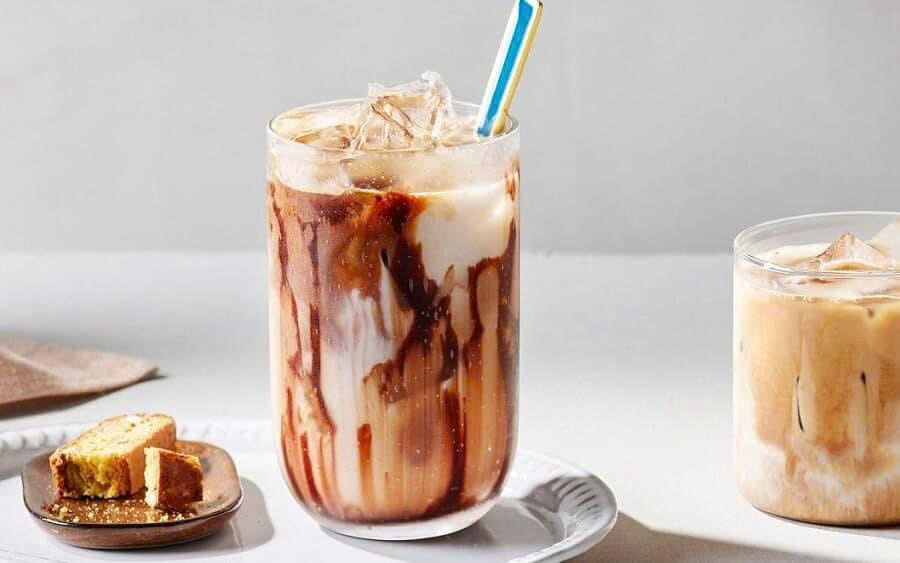
This section broadens the knowledge base, addressing the complete informational and discovery intent by introducing regional specialties and modern creations.
The Mild Alternatives: Bạc Xỉu and Cà Phê Cốt Dừa: The strength of Cà Phê Sữa Đá and the richness of Cà Phê Trứng aren’t for everyone. Vietnam’s creativity extends to offering milder, yet distinctly Vietnamese, alternatives.
- Bạc Xỉu (The Vietnamese Iced Latte): Often mistranslated, Bạc Xỉu is the result of a Cantonese influence in Saigon’s Chinatown during the early 20th century. The phrase means “white receive, small amount of coffee.” It is characterized by a much higher proportion of milk (often a mix of fresh milk, condensed milk, and crushed ice) with only a small drizzle of the potent black coffee concentrate on top. It is sweeter, lighter, and lower in caffeine than Cà Phê Sữa Đá, making it a popular choice among women and children. It is the perfect entry point for those new to the intensity of Robusta.
- Cà Phê Cốt Dừa (Coconut Coffee): A modern, tropical creation that has become incredibly popular in the last decade. It’s a true frappe, where the coffee is blended with coconut milk, condensed milk, and ice into a creamy, slushy consistency. The rich, fatty coconut flavor, often slightly caramelized from the blending process, provides a luxurious, cooling experience that pairs excellently with the residual bitterness of the coffee. It is a fantastic option for a hot summer day.
The New Wave and Regional Specialties: Vietnamese coffee culture continues to evolve, incorporating new flavors while maintaining its signature strength.

- Cà Phê Muối (Salted Coffee): The emerging trend, which originated in the central city of Huế. This drink involves a layer of creamy, frothy topping made from condensed milk and whipped cream, blended with a touch of sea salt. The salty component is not meant to make the drink taste like the sea, but rather, to scientifically enhance the perceived sweetness of the condensed milk and simultaneously cut the bitterness of the Robusta coffee. It offers an incredible balance of sweet, salty, and strong—a sophisticated evolution of the classic cà phê sữa.
- Sữa Chua Cà Phê (Yogurt Coffee): A traditional, peculiar, but surprisingly refreshing combination, especially popular in Hanoi. This drink layers thick, tangy, creamy yogurt (sữa chua) with strong, dark coffee, often served with crushed ice. The tartness of the yogurt provides a unique acidic counterpoint to the bitter Robusta, creating a flavor that is both cleansing and stimulating—a must-try for those seeking unconventional combinations.
- Cà Phê Chồn (Weasel Coffee/Kopi Luwak): While a luxury specialty rather than a daily drink, no discussion of Vietnamese coffee is complete without mentioning this unique, controversial, and high-priced bean. Vietnam produces its own versions of civet coffee, where the fermentation in the animal’s digestive tract imparts a unique smoothness and aroma to the bean.
5. Integrating Vietnamese Coffee into Your Life: Expertise and Etiquette
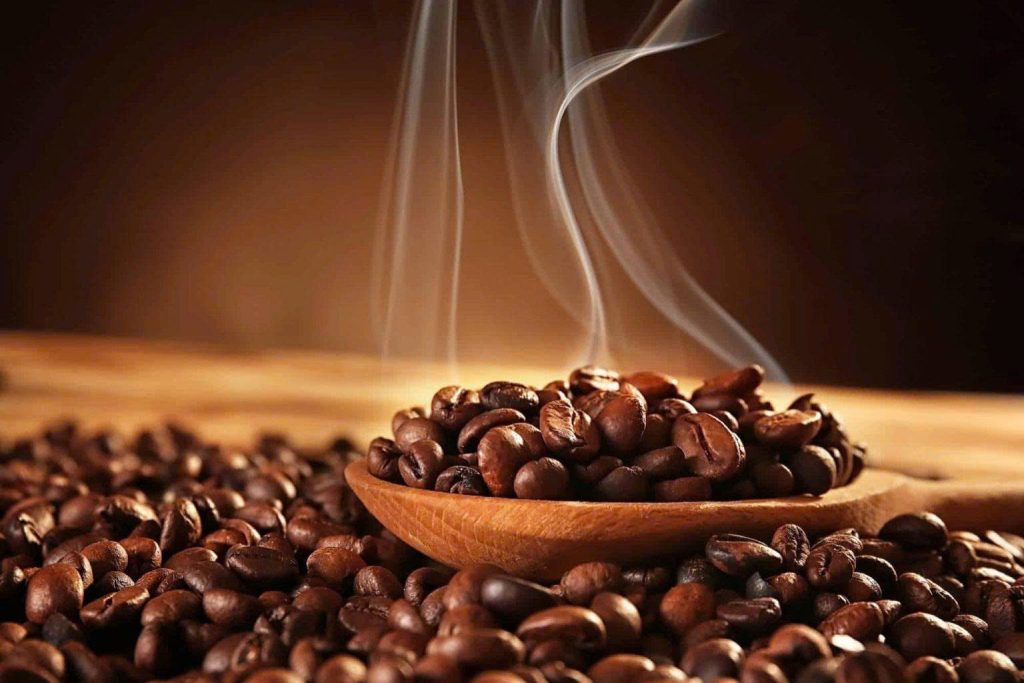
This section transitions into actionable advice, tools, and deeper cultural insight, solidifying the E-A-T principles and fulfilling the commercial/do intent.
Essential Gear and Sourcing for the Home Barista: To replicate the authentic experience, precision in equipment and ingredients is key.
- The Perfect Phin: Investing in a quality Phin filter is non-negotiable. Look for models made of stainless steel over aluminum, as they are more durable, easier to clean, and retain heat better for optimal extraction. Ensure the screw-down press fits snugly. Sizes typically range from 6oz to 8oz for a single serving.
- Sourcing the Right Beans: The most authentic experience demands Vietnamese Robusta or a dark-roast blend with a significant Robusta component. Look for beans that are labelled as dark, bold, or chocolatey. Avoid light roasts, which will taste thin and sour when brewed in a Phin. The key is a medium-coarse grind—finer than a French press but coarser than espresso—to prevent clogging the filter.
- The Condensé Choice: The specific brand of sweetened condensed milk matters for both flavor and consistency. High-quality, widely available brands like Longevity or Vinamilk are excellent choices, offering the necessary richness and viscosity to balance the strong coffee. Do not attempt to substitute with fresh milk, cream, or other low-fat alternatives, as the result will not be authentic.
- The Serving Vessel: A sturdy, thick-walled glass mug is ideal. For Cà Phê Trứng, a small cup that fits snugly into a larger bowl is essential for the water bath ritual.
Etiquette and Ordering: Speaking the Coffee Language
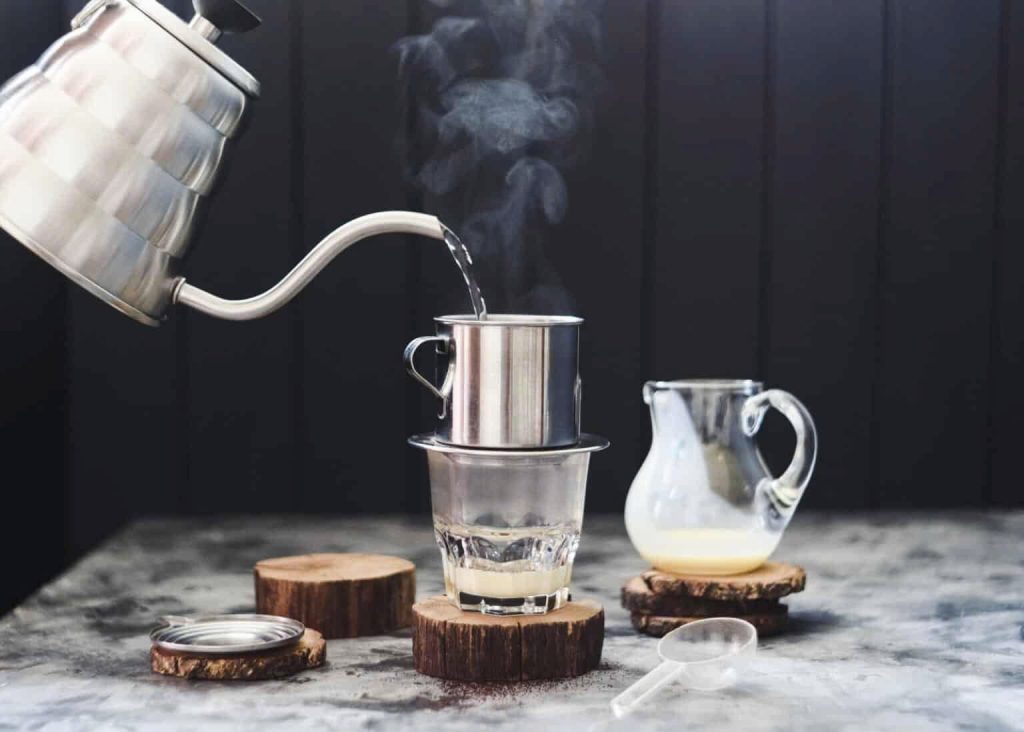
Understanding the basic language of coffee is essential for navigating the Vietnamese coffee scene, whether at a street stall or a modern cafe.
Key Vietnamese Phrases: The language of coffee is simple and binary:
- Temperature: Nóng (Hot) or Đá (Iced).
- Sweetness: Sữa (Milk/with condensed milk) or Đen (Black).
- Modifiers: Ít ngọt (Less sweet) or Không đường (No sugar).
Ordering Examples:
- “Iced coffee with condensed milk, please”: Cà phê sữa đá. (The default, most common order).
- “Hot black coffee, no sugar”: Cà phê đen nóng, không đường.
- “Iced Egg Coffee”: Cà phê trứng đá.
The Art of Waiting and the Green Tea Chaser: Never rush the Phin. The slow drip is a core cultural component. Once your coffee is served, it will almost always be accompanied by a small glass of iced or hot green tea (trà đá or trà nóng). This is a courtesy—the tea is meant to cleanse the palate before and after sipping the rich, strong coffee, ensuring you can fully appreciate the flavor.
RELATED: How to Order Coffee Like a Local in Vietnam: Your Ultimate Guide
6. Cultural and Health Considerations
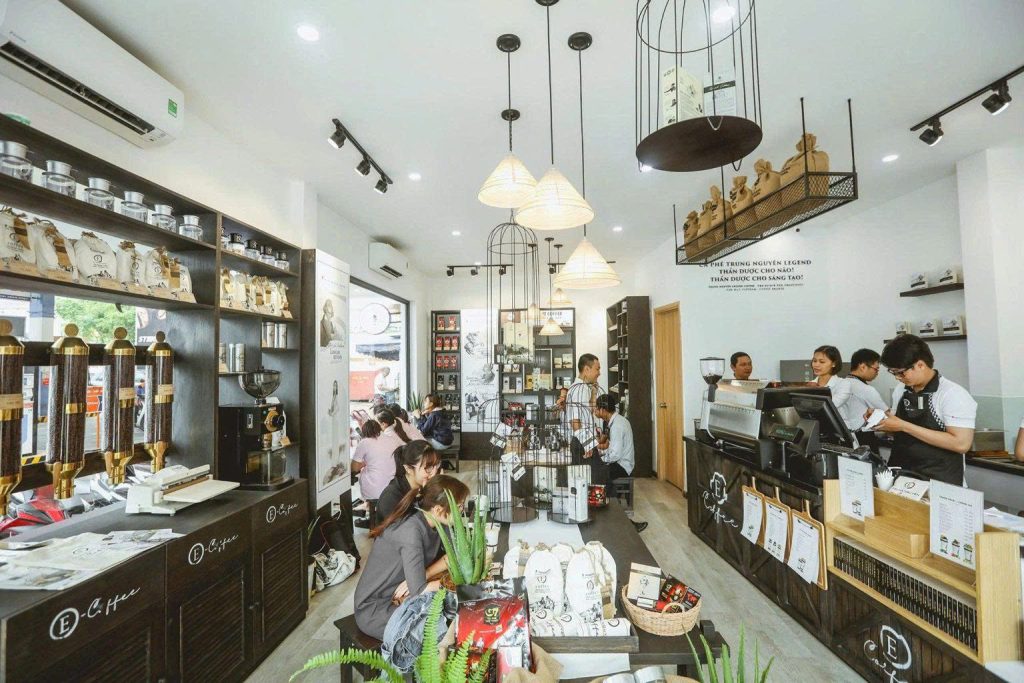
Understanding the intense nature of Vietnamese coffee is key to enjoying it responsibly.
- The Caffeine Kick is Real: Due to the use of Robusta and the concentrated Phin method, Vietnamese coffee is significantly stronger than a standard American drip coffee or even many espresso-based drinks. Beginners or those sensitive to caffeine should always start with a smaller portion or opt for the milder Bạc Xỉu. Avoid drinking it on an empty stomach.
- Sugar and Calories: Traditional Cà Phê Sữa Đá and Cà Phê Trứng are high in both sugar and fat due to the generous use of condensed milk. If you are watching your sugar intake, practice using the ít ngọt (less sweet) modifier, or reduce the amount of condensed milk in your home recipe.
- The Social Dynamic: Remember that a cafe in Vietnam is a social hub—a place to conduct business, gossip, or sit in silent contemplation. Embrace the noise, the bustle, and the low-to-the-ground seating. You are participating in a living cultural tradition that values community over personal space.
- Quality Assurance: Look for reputable local brands (Trung Nguyên, Highlands Coffee, Mê Trang) or local artisan roasters who are transparent about their bean sourcing (especially in the Central Highlands regions of Đà Lạt and Buôn Ma Thuột), ensuring you receive 100% pure coffee without added fillers (like corn or soybeans) sometimes found in cheaper local blends.
RELATED: The Best Cafes in Ho Chi Minh City: Saigon’s Coffee Guide
The journey through the art of Vietnamese coffee, from the intense depths of the Robusta bean to the iconic Cà Phê Trứng and the ubiquitous Cà Phê Sữa Đá, is a testament to cultural resilience and flavor mastery. This story is told through the small, simple metal filter—the Phin.
The Cà Phê Trứng, born from the scarcity and inventive spirit of Mr. Nguyễn Văn Giảng, represents Hanoi’s brilliance. Meanwhile, the robust Cà Phê Sữa Đá embodies the national character: strong, enduring, and ultimately, sweet.
The art of Vietnamese coffee is the art of living slowly. It’s about taking a moment to watch the world go by and savor the powerful, complex liquid. Now that you understand this profound tradition, grab your Phin, find your low stool, and embrace the strong, sweet art of Vietnamese coffee.

